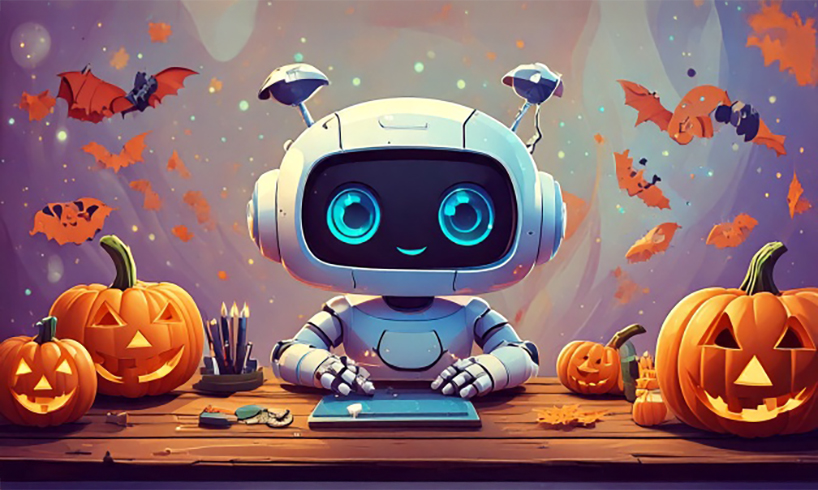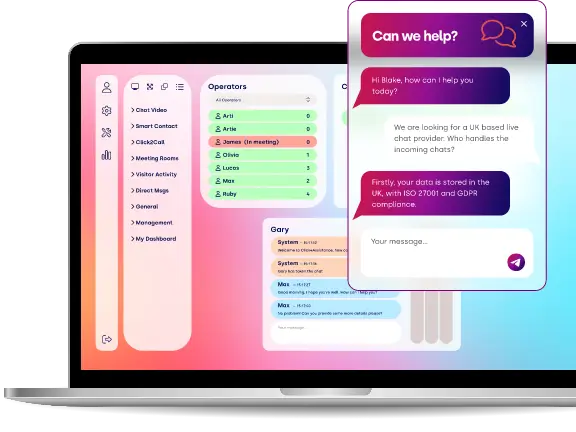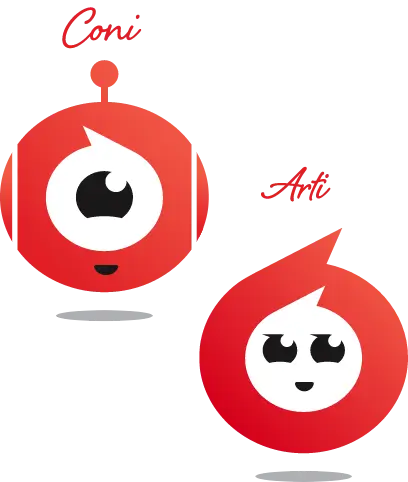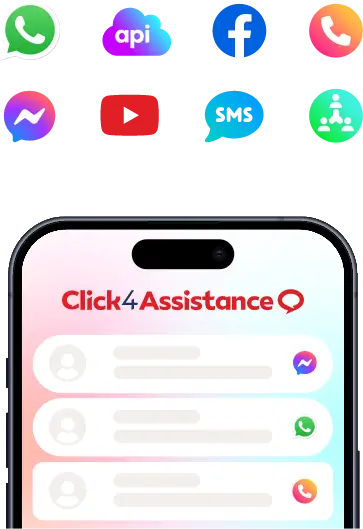13 Tricks and Treats: The Playful, Useful, and Surprisingly Human World of AI Chatbots

Every October, as shop windows fill with pumpkins and brands shift palettes to autumn colours, digital experiences can also take on a seasonal feel. A chatbot greeting might shift to something more playful, perhaps a festive joke or a pumpkin emoji. It’s a small, human touch in a world of automation.
But this time of year also highlights something deeper: AI chatbots can be scarily human one minute and horrifyingly robotic the next. They engage and (without appropriate training), can misstep and occasionally startle, like a ghost attempting to make its presence felt. In the spirit of the season, here are 13 tricks and treats from the world of chatbots: insights into what makes them feel engaging, where they go astray, and why those moments matter.
1. A Little Seasonal Magic
A themed chat window, with perhaps an orange accent, a ghostly emoji and a “No tricks, just support!” greeting, can make an ordinary digital interaction feel personal.
Customisation, when done thoughtfully, brings warmth to automation. It signals that a brand is paying attention to detail, not just deploying technology.
A touch of playfulness can light up the experience, like a candle in a pumpkin, without stealing the show.
2. The Thinning Veil Between Tool and Personality
Chatbots bridge the space between product and personality, doing their job while showing a ghostly spark of character. When tone and timing are right, the illusion of conversation feels natural. When they’re slightly off, users sense something strange beneath the surface.
The line between human and mechanical is thin, and it’s in that shadowy space that both the delight and design challenges lie.
3. Bewitchery of Personalisation
Personalisation is one of a live chat’s most powerful spells. When done well, it can make visitors feel recognised, understood, and genuinely engaged. An agent that includes a customer’s name, suggests relevant products, or adapts tone based on prior interactions can create a sense of connection that feels almost magical.
But like any spell, personalisation can backfire if overused or misapplied. Without careful consideration, it can feel intrusive, tone-deaf, or even uncanny. Imagine a chatbot repeatedly addressing a user by name in a serious complaint, or inserting playful emojis where none are wanted. What was meant to enchant can instead frustrate.
The trick, much like casting the perfect spell, is in moderation. Done thoughtfully, personalisation can enchant and engage; overdone, visitors might feel spooked.
4. When Chatbots Take a Spooky Turn
Every user or developer has a story. The chatbot that misunderstood sarcasm. The one that refused to stop apologising. The one that looped infinitely on “How can I help?” Without careful design and testing even the most advanced systems can seem possessed.
These aren’t horror stories; they’re case studies. Each misstep reveals where design meets real human behaviour, and where empathy makes the difference.
5. The Ghost in the Machine
When a chatbot seems a little too familiar, it can feel unsettling…even creepy. But what users are really sensing is the imprint of the humans who built it. Every word it produces comes from patterns learned from us. It’s not haunted; it’s echoing us.
And that’s what makes the interaction fascinating. The ghost in the interface isn’t supernatural, it’s a mirror reflecting our own language, quirks, and personality.
6. Spells of Connection: How Customisation Builds Engagement
Themed chat buttons and windows aren’t just decoration- they’re dialogue. A well-timed seasonal tone can turn a routine exchange into a memorable one.
A proactive invitation that says, “Trick or treat? I’ve got the latest offers,” blends engagement with function. Users appreciate the personality; they remember the experience.
Small touches, like a seasonal emoji, a playful greeting, or themed microinteractions, can turn routine conversations into memorable moments. Done right, these spells build warmth and connection. But beware! Done carelessly, they can feel forced or distracting.
7. The Perils of Over-Humanising
When AI systems are passed off as real agents, or try to sound too human, errors feel personal. A misplaced “I understand how you feel” or an oddly emotional phrase can unsettle users rather than comfort them.
Authentic empathy in chatbots for customer service comes not from pretending to feel, but from clear, context-aware language. Tone should always serve clarity, not performance.
8. Lessons from Real-World Frights
History has its warnings, there are plenty of real-world examples of chatbots going a little sideways:
- Microsoft’s Tay learned from social media and quickly absorbed toxic language.
- Customer service bots sometimes apologise endlessly without solving the issue.
- Experimental models that over-simulate personality can cross into unsettling territory.
Each fright teaches the same lesson: good AI design isn’t about making technology emotional, it’s about making it appropriate.
9. The Haunting of Legacy Chatbots
Some chatbots use information that has been left to linger in long unused data corridors. They deliver outdated messages, reference discontinued services, or act in ways that confuse users.
These digital ghosts remind us that AI requires ongoing care. Even minor neglect can leave users confused, or feeling like they’re interacting with a haunted system.
10. Treats of Creative Experimentation
Seasonal campaigns are the ideal moment to experiment. Users are more open to small changes and light creativity, giving designers space to test tone, timing, and surprise.
A seasonal animation, or a small design flourish can make an interaction feel more alive. These moments offer genuine insight and can reveal what engages users, and what quietly turns them away.
Experimentation (within clear limits) keeps AI fresh and approachable.
11. Tricks vs. Treats: Balancing Surprise and Consistency
A little surprise goes a long way. A Halloween greeting after resolving a query adds warmth; a sudden shift in tone mid-conversation adds confusion.
The balance lies in bounded creativity: systems that feel alive but remain predictable. It’s the digital equivalent of a ghost story told with just the right pause before the twist.
12. Clear Masks: Why Transparency Matters
Honesty about automation builds trust. When users know they’re speaking to an AI, personality feels like a feature, not a deception.
A clear line such as, “I’m your automated assistant — here to help,” gives context. From there, personality, jokes, or seasonal flair can be sprinkled in safely. Masks are fine, as long as everyone knows they’re wearing one.
13. Reflections from the Other Side: The Surprisingly Human Chatbot
At the end of the day, chatbots reflect human language, humour, and imperfection. When they surprise us, it’s usually because they’re echoing the patterns of the people who built and trained them.
They’re not magical, and they’re not monsters. They are mirrors; and sometimes catching our reflection when we least expect it can give us a fright. Halloween celebrates transformation, and Chatbots transform simple data into engaging, adaptive interactions.
They remind us that technology isn’t replacing the human voice — it’s reanimating it. And perhaps that’s the best kind of magic, not spooky but surprisingly human.
Beyond the Veil: The Human Side of AI
Across these thirteen tricks and treats, one thing becomes clear: chatbots work best when they balance capability with character. The aim isn’t to make them human, but to help them communicate in ways that feel natural, and a little bit alive.
Every response they offer carries a trace of their creators: the tone of a writer, the flair of a designer, the choices of a team trying to make technology more helpful. When it all comes together, the experience feels effortless. When it falters, it reminds us how essential empathy and context still are.
So, as Halloween draws near and the veil between worlds feels a little thinner, it’s worth remembering that the ghost in the machine isn’t something frightening. It’s us — our language, our intent, our imagination — reflected back through code.

























